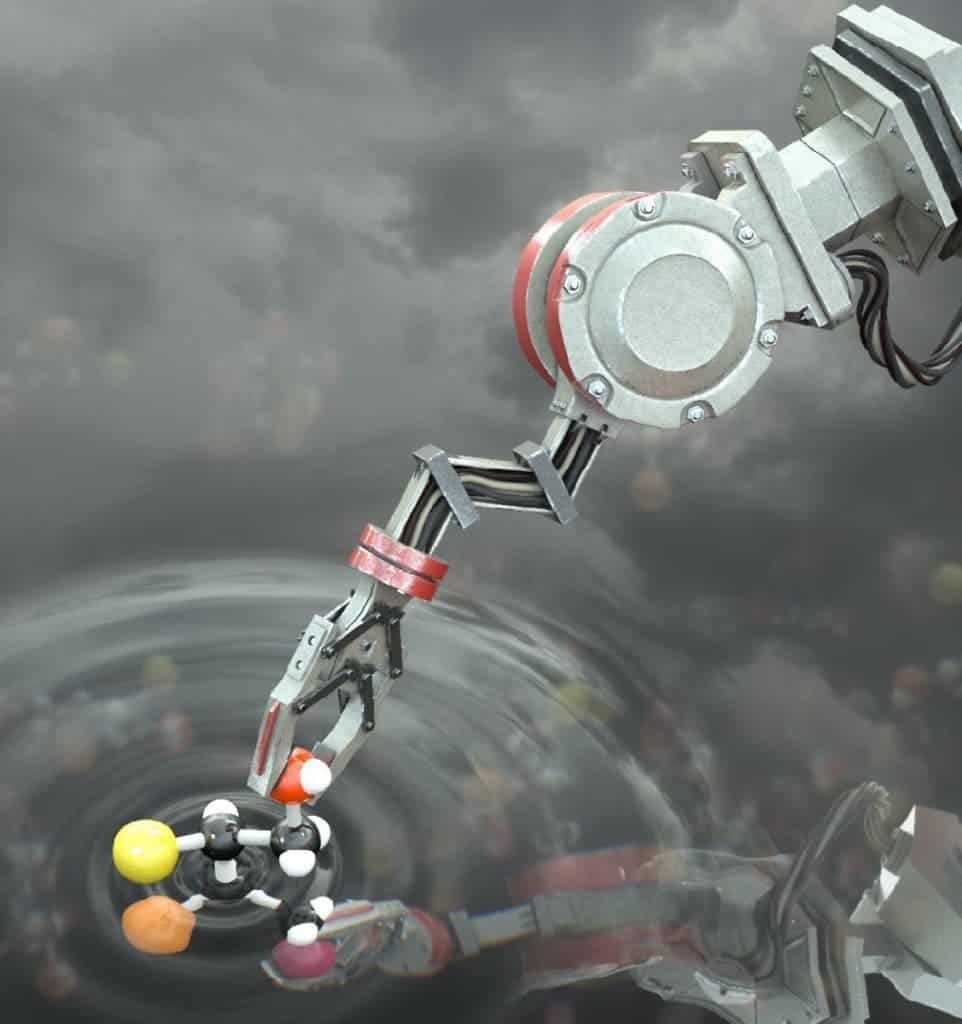Researchers at the University of Manchester built a robot that’s a millionth of a millimeter in size. This extraordinary feat of miniaturization marks the world’s first molecular robot, with potentially deep ramifications in medicine, advanced manufacturing processes, and even molecular manufacturing.
Stacking billions of these molecular bots would barely reach the size of a few grains of salt — that’s just how small this thing is. What’s staggering, however, is that even at such a tiny scale the molecular contraption is programmable. It even has an atom-sized arm which it uses to perform basic tasks like moving molecular cargo.
In many respects, the molecular bot is very similar to a simple, life-sized robot. Instead of metal parts and circuits, it’s made of 150 individual atoms, comprising elements like carbon, hydrogen, oxygen, and nitrogen. To task the molecular bot with instructions, scientists need only to carry out chemical reactions in special solutions.
Manufacturing the molecular robot proved to be an extremely complex job, same goes for operating it. At the end of the day, however, the whole process is based on simple chemical processes, meaning any lab could reach the same results with the right know-how.
“‘It is similar to the way robots are used on a car assembly line. Those robots pick up a panel and position it so that it can be riveted in the correct way to build the bodywork of a car. So, just like the robot in the factory, our molecular version can be programmed to position and rivet components in different ways to build different products, just on a much smaller scale at a molecular level,” said Professor David Leigh, who led the research at UM’s School of Chemistry.

Schematic of the molecular robot. “So, just like the robot in the factory, our molecular version can be programmed to position and rivet components in different ways to build different products, just on a much smaller scale, at a molecular level,” said Leigh. Credit: Nature.
While this is still a proof of concept, Leigh claims that this sort of robot, which represents the ‘ultimate in miniaturization of machinery’, could lead to all sorts new products and services, while also improving current ones. It could accelerate drug discovery or reduce power requirements. What’s more, these molecular bots could one day be used as assembly lines to build other nano-sized machines.
“This is just the start but we anticipate that within 10 to 20 years molecular robots will begin to be used to build molecules and materials on assembly lines in molecular factories,” Leigh said.










